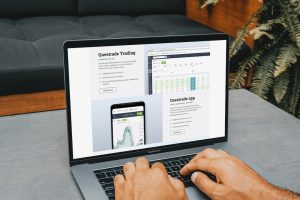Forex leverage is a concept that is often misunderstood by traders who are new to the market. In simple terms, it refers to the amount of money that a trader can borrow from their broker to increase their trading position. For example, if a trader has a leverage of 1:100, they can potentially trade with $100,000 while only having $1,000 in their trading account.
But what is your money worth in the forex leverage? It’s important to understand that leverage can be both a powerful tool and a double-edged sword. On the one hand, it can magnify your potential earnings. On the other hand, it can also increase your potential losses.
Let’s take a closer look at how leverage works and what it means for your trading.
How Leverage Works
Forex brokers offer leverage as a way to attract traders and increase trading volumes. Leverage allows traders to open larger positions with a smaller amount of capital. This means that traders can potentially earn more profits with less money upfront.
Leverage is expressed as a ratio, such as 1:50, 1:100, or 1:500. The first number represents the amount of capital that a trader needs to open a position, while the second number represents the amount of leverage that the broker is offering.
For example, if a trader wants to open a position of $10,000 and their broker offers a leverage of 1:100, they would only need to put up $100 of their own money. The remaining $9,900 would be borrowed from the broker.
If the trade is successful, the trader would earn a profit on the full $10,000. However, if the trade is not successful, the trader would still be responsible for repaying the borrowed funds, which could potentially result in a loss that is greater than their initial investment.
The Risks of Forex Leverage
While leverage can increase your potential earnings, it also comes with significant risks. The most obvious risk is that a trader can lose more money than they have in their trading account. This is known as a margin call, and it occurs when a trader’s losses exceed their available capital.
Margin calls can be devastating for traders, as they can result in the loss of their entire trading account. This is why it’s important for traders to use leverage carefully and to always have a solid risk management strategy in place.
Another risk of forex leverage is that it can magnify the impact of market volatility. When a trade goes against a trader, the losses can add up quickly, especially when leverage is involved. This can lead to emotional trading decisions and a cycle of losses that can be difficult to break.
How to Use Forex Leverage Safely
Despite the risks, forex leverage can be a powerful tool for traders who use it wisely. Here are some tips for using leverage safely:
1. Understand the risks: Before using leverage, it’s important to fully understand the risks involved. This includes understanding the potential for margin calls and the impact of market volatility.
2. Use a solid risk management strategy: Traders should always have a risk management strategy in place, regardless of whether or not they are using leverage. This can include setting stop-loss orders and limiting the size of their positions.
3. Start small: Traders who are new to leverage should start small and gradually increase their position sizes as they gain more experience.
4. Choose a reliable broker: Traders should choose a broker that is reputable and regulated to ensure that their funds are safe.
5. Never risk more than you can afford to lose: This is a fundamental rule of trading that applies to all traders, whether or not they are using leverage.
In conclusion, forex leverage can be a powerful tool for traders who use it wisely. It can increase the potential for profits while also increasing the risks of losses. Traders who understand the risks, use a solid risk management strategy, start small, choose a reliable broker, and never risk more than they can afford to lose can use leverage safely and effectively.





